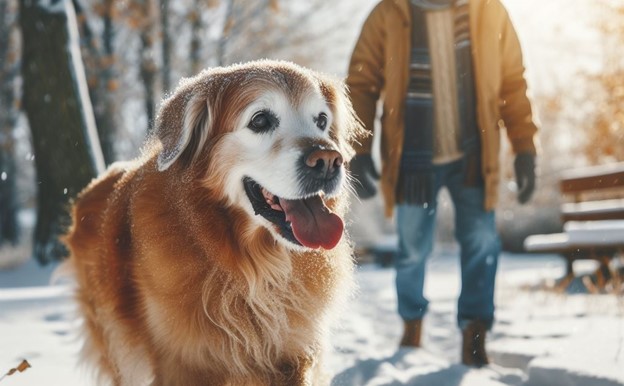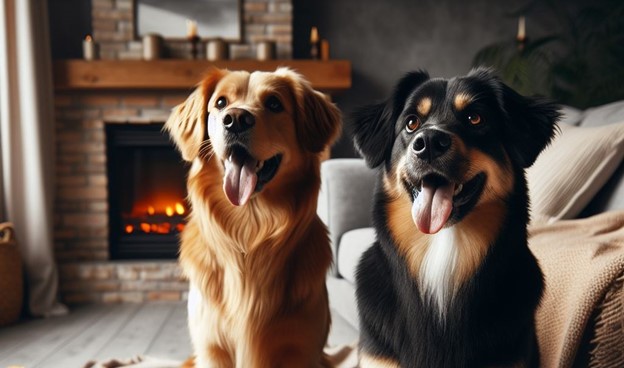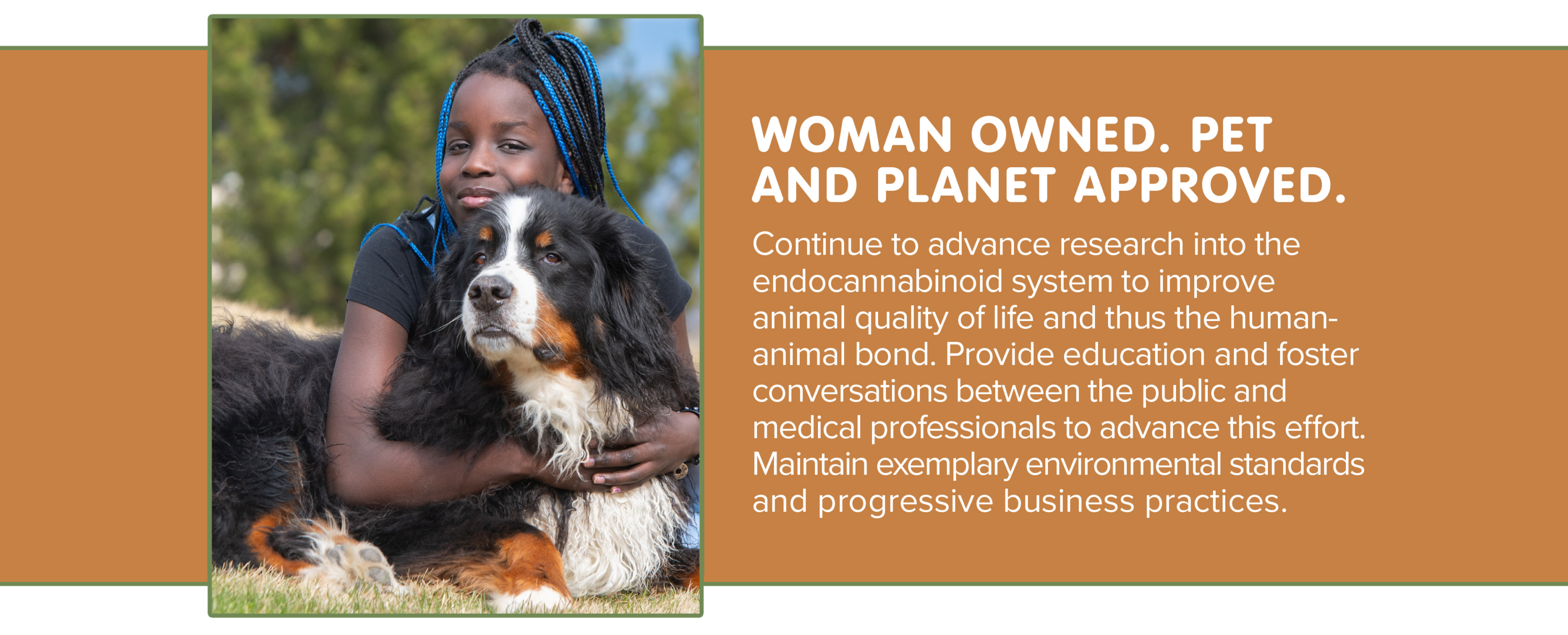Helping New Pets Adjust with CBD
Let’s face it – holiday puppies and kittens are pretty hard to resist. What’s more adorable than the little furballs running around while the family happily enjoys their antics?
Even in the best situations, it can be daunting for a young dog or cat to adjust to their new forever home. And it can be even harder if your adoptee is an adult or senior furkid.
CBD can assist with the transition because it causes the release of soothing compounds so your pet can relax and enjoy their new life. Most kittens, puppies, and young adult dogs and cats only need a few doses; shyer pets may need a few weeks of CBD support. Older pets may find that CBD assists with motility and neurological and need it long term.

CBD oils are the best option to start with as they are absorbed quickly and doses can easily be adjusted for small body sizes and individual sensitivities. It’s also the most flexible in terms of onset of action and frequency of administration. Older pets may do better long term if switched to a Joint or Neurological Support capsule.
Administration Examples:
- If your kitten weighs 2 lb, you can use our CBD oil for Cats incorporating 0.05 ml (5 lb cat dose) with a full day’s meal. Divide the meal breakfast & dinner and your kitten should have a healthy amount of CBD so it can settle into your home.
- Overly excited 2 yr dogs may need 1-2x the labeled amount of CBD oil for their body weight (Small to Medium or Large to Extra Large sizes) administered by mouth 3x/day. This higher dose administered more often saturates their cannabis system with calming compounds, helping them remain calm so introductions can go smoother.
- Older dogs with joint stiffness and associated anxiousness often do well with the labeled amount for their body weight for 2-6 weeks (older bodies can take a little longer to fully adjust to their new lifestyles), then change to a weight appropriate Joint Support CBD capsule formulation, also at labeled doses – 1 cap twice daily.

CBD isn’t the only thing that can help your new fur child adapt to their forever home. Here are a few helpful tips for everyone … and a few age and species specific.
Everyone needs their own space and sometimes that space needs to be separate (introverted pets), and sometimes it needs to be a quiet spot in the main living area (extroverted pets). For the first week, plan for both options and have a cozy spot just for them in an out of the way room, and one tucked next to the couch in the living room. As you determine what personality type they have, you can alter their relaxation area to fit them.
Take introductions slowly, even with uber-friendly pets, and remember that each species likes to introduce themselves differently. It may take time for cross-species translations to become clear – weeks to months in some cases. For same-species introductions, it all depends on their personalities and flexibility in sharing space. Some take to each other immediately, while others need a few weeks of supervised social time.
Diffusion of calming essential oils releases terpenes – compounds that give plants their odors – to soothe frayed nerves. The cannabis receptor system can also use those terpenes to bolster CBD’s effects. Lastly, using essential oils provides a household smell that eases the transition for all involved. A large portion of both cat and dog communication is by scent, so when everyone smells a little alike, they smell a little like home.

Species and Age-Specific Tips
Kittens
- Kittens are small and need a safe space both near and apart from everyone else … and they may choose some odd locations in between. Hard-topped carriers with the doors off and a small blanket covering it (leave the door opening free) work well and can be tucked into nearly any area.
- Soft bedding is a must but it’s also a good idea to place kitten-safe items in there with household member smells. For humans, lightly used T-shirts and pillow cases work well, and grab a moderately used toy for any furry household members. Leave their favorite toy for them, but you don’t want a rarely used one either as the kitten will like having a stronger scent.
- It may not be safe for the kitten to run amok unattended, day or night – or it might be just the ticket to household harmony. If your kitten prefers an isolated safe spot, consider moving one of the carriers to a quiet bathroom or kitten-proofed bedroom. This provides comfort even though the kitten is away from the family, as does music playing softly in the background.
- Anytime the carrier or other safe bedding area is provided, consider a few other things small body sizes need quick access to: small litter box (especially in isolated safe spots and larger resting areas – at least 2 boxes for a single kitten), water (small tip-proof, wide mouthed bowls work great), and safe toys — all that energy has to go somewhere!
Adult Cats
- In addition to their own space, isolated or not, and supervised introductions, adult cats need some alone time to explore their new home, and alone time with their new humans. They need to feel secure in every part of their environment and you know that’s happening when they start face marking and body rubbing along furniture and walls. Having a few cat scratchers is also a good idea as they leave scent markers during that process.
- Another tip they’re feeling more comfortable is in how they express themselves in body language and vocalization. This communication may be completely normal for another cat, but dogs may need several supervised sessions until they learn how to translate cat language. It’s always best to let the new cat come to any other pet in their own time.
- To help speed that process up, about 90 min after CBD oil is given, have a group play or grooming sessions. If the group is calm, this can also be a treat time. All of these things – playing, grooming, and food – are part of the social structure in nearly all species. It’s a common language we all can understand and helps reinforce a new pack/pride mentality in the fur kids. Whether you choose play, groom, treats or a mix, depends on the individuals present. Go slower and remain calmer with shy and bossy pets and use something more lively with obviously friendly pets.
Senior Cats
- Older cats are often happy to have a comfy place to rest, but are a bit set in their ways, so expect the transition to go a little slower and quieter than younger cats. Until otherwise observed, it’s also best to assume older cats have some degree of joint stiffness.
- While CBD can assist with mobility, some joints still won’t allow huge leaps to get to preferred resting places. Consider having slide-proof rugs on otherwise slick surfaces and either steps or ramps strategically placed for furniture and sunny window access. These ramps can also serve for the older cat to access quiet spaces in common areas – a helpful thing when younger housemates get a bit rambunctious.
- Like kittens, older cats often need more litter boxes – and those boxes need to be uncovered for ease of movement. A comfortable litter box experience does wonders to help you older cat feel at ease in their new home.
- Similarly, older cats often have strong preferences when it comes to meal times. Some like their food elevated (easier for stiff necks, shoulders and elbow joints), some are social eaters wanting to be next to someone – you or a furry friend – during meals, and others want to eat alone (completely behind a closed door or just around the corner).
- Learning what your older cat prefers provides another layer of comfort, and when your older cat is comfortable, they are more likely to transition to full household member in a shorter time frame.

Puppies
- Similar to kittens, puppies need a spot to rest and recharge. However most puppies will want to be with the group while they nap. Carriers and open kennels are still excellent options and offer the option of isolated safety as needed. This is especially true if the puppy is introduced to an older dog who may have strict rules about doggy conduct, or if there’s simply a large weight disparity between friends.
- Puppies need to be a part of the pack, day and night, but they also need to understand parts of the pack leave the den and return. During this time, there are rules of conduct they need to follow. Helping them understand these rules is part of normal puppy training, but you can assist by providing appropriate toys for alone & pack play time. Unsupervised play should be with near indestructible toys while pay play time can include all kinds of toys. At night, make sure the puppy – whether in a carrier or free roaming – sleeps with humans or bonded housemates.
- Take playtime to new heights before supervised time with the new housemates. Take them outside for ball toss, go for an extra long walk, or encourage indoor zoomies while the current fur kid is otherwise occupied. Once the puppy is ready to lay down for a bit, take them into the common area and offer a little water. Encourage them to rest there and let their housemate come to investigate. As needed, use leashes for both individuals for a few days and don’t hesitate to break any tension by offering treats while the two face away from each other.
Adult Dogs
- Adult dogs are more set in their personalities and already know how to read body & scent languages. Introductions should always consider whether they seem shy, fiery friendly, lazy friendly, bossy, or indifferent.
- Shy and indifferent dogs need some time before a housemate runs up to them so use leashes and let the quieter individual dictate closer interactions.
- Friendly dogs, whether super excited or a bit lazy, often get along right away with anyone and introductions go quietly.
- Bossy dogs may need additional CBD and time with their favorite human to understand the new dynamics don’t change everything. They also need strict rules of conduct to feel secure in their pack position.
- Utilize pack time – play/exercise, grooming, food – to reinforce household bonds. This may mean feeding pets within sight but not reach of each other, or they may like to share meals. Adjust according to personality and species/age preference. Play aggressively with fiery or bossy dogs before pack time so their strong personalities won’t overpower quieter ones.
- Like puppies, adult dogs will want to be a part of the pack at all times but should quickly understand humans come and go. Unless there’s a friends-at-first-sight scenario, always keep a new adult dog in their isolated safe spot when you’re away.
- If there’s any anxiousness leading up or during this process, give CBD oil ~90 minutes before you leave. Kenneling may be needed during nighttime but the dog shouldn’t be isolated. Pack sleeping helps most dogs feel comfortable and settle quicker into their forever homes.
Senior Dogs
- Similar to older cats, older dogs have stiff joints and we need to take that into consideration during introductions.
- Assume their joints are uncomfortable which can lead to grumpiness in older dogs, tarnishing introductions, and give CBD oil 90 min beforehand to ease any anxiousness associated with getting bumped and to improve flexibility while they explore their new home.
- Consider starting them on a long term CBD joint support so they remain comfortable.
- Let them explore leashed at first, then unleashed as you assess their response – and the responses of other housemates. Most older dogs will make a thorough investigation before finding a comfy spot to lay down in a common area.
- They should also have a bed in a quiet room and no-slick flooring in all main walkways. Most older dogs accept cats quickly, either happy to be around them or to ignore them as the cat prefers.
- Older dogs may take more time to integrate with younger dogs depending on how the youngster comports themselves.
- That said, comfortable older dogs are often tolerant of puppies as long as the puppies are easily distracted by humans with toys. And comfortable older dogs are pretty good at body and scent languages, so when the younger dog is amenable, older dogs can integrate quickly. But when the youngster is unruly or overly bossy, things can get dicey.
- To help smooth the transition, use CBD oil for both 90 min prior to supervised time, exercise the younger one, then have a calm grooming session in the common room. The goal is for the dogs to just hang out – no direct interactions needed – until everyone understands the rules of the house. At this point, the dogs are often happy to interact or at least ignore each other.


